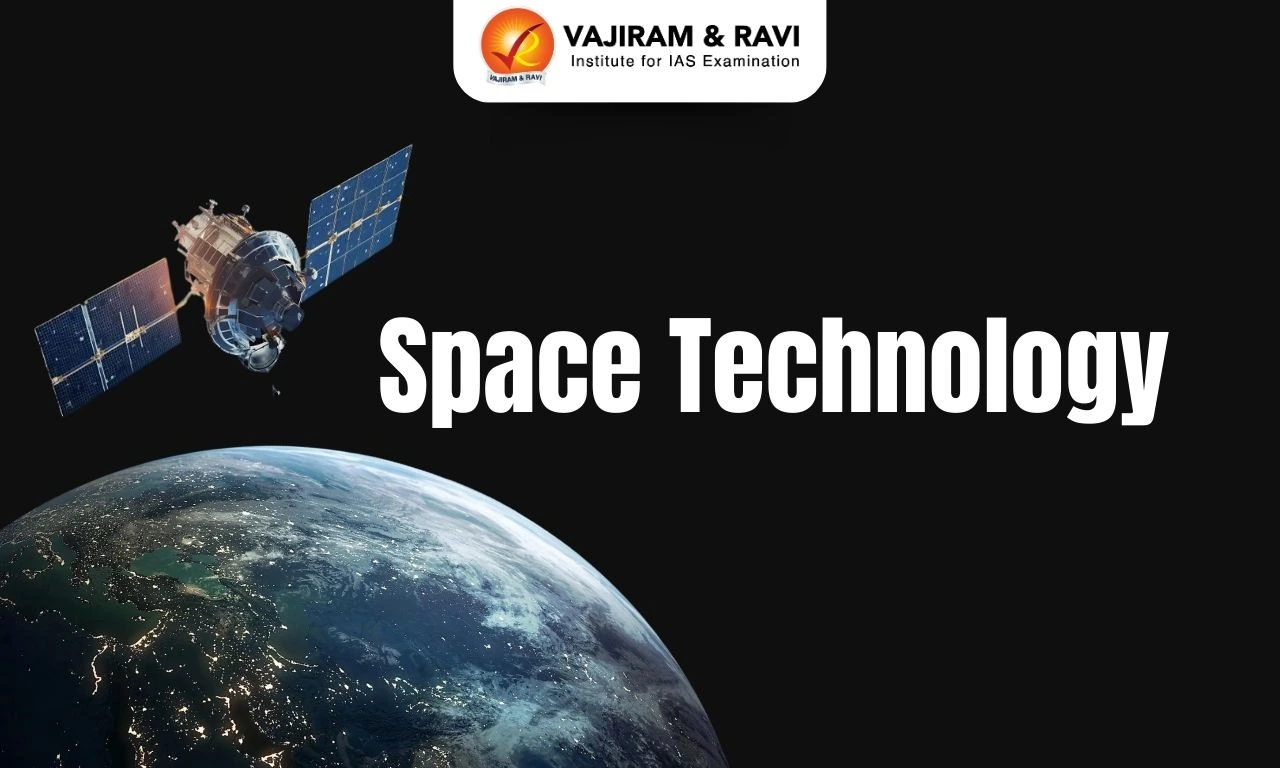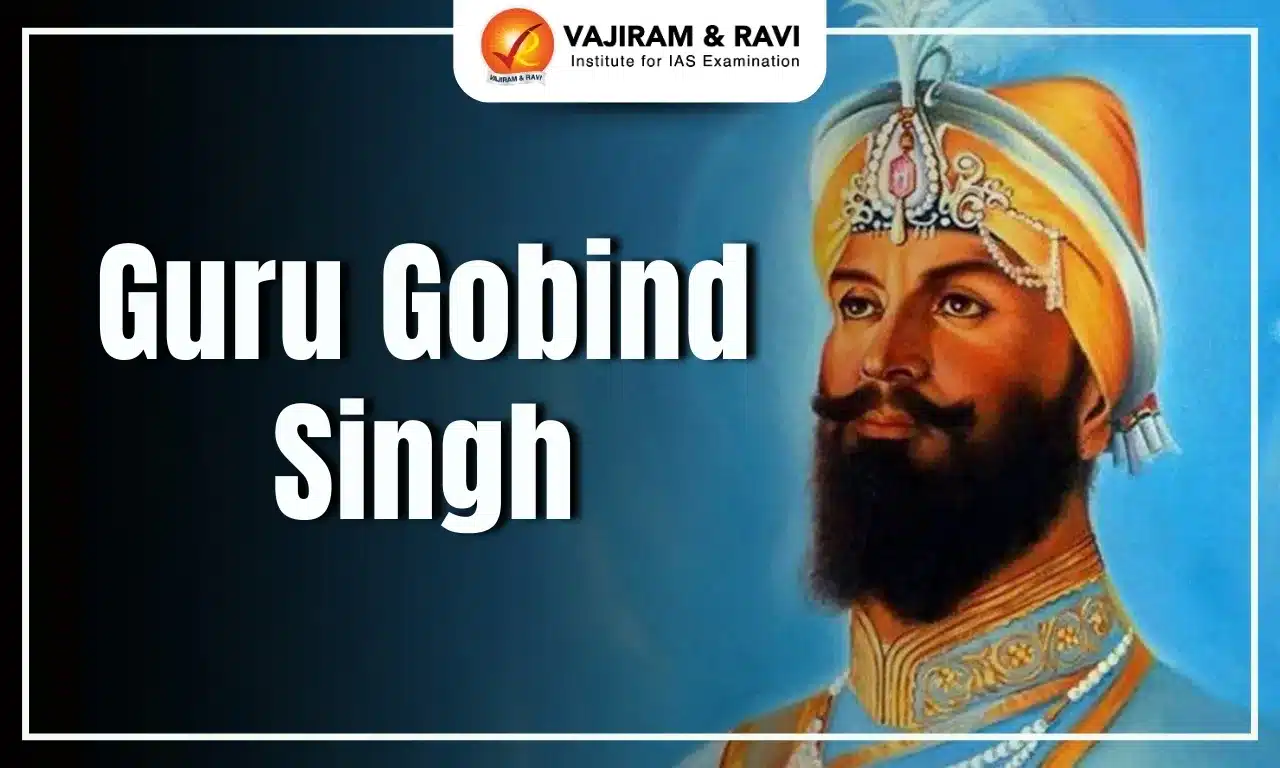Space Technology refers to the application of engineering principles to the design, development, manufacturing, and operation of space travel and exploration technologies and systems. Space Technology offers new means to address global challenges and encompasses satellites, space stations, ground stations, monitoring and tracking centers, downstream analytics AI, software, etc. It plays a vital role in the modern world by enabling telecommunications, navigation systems, weather forecasting, climate monitoring, and national security.
India has emerged as a major space power, with the Indian Space Research Organisation (ISRO) successfully developing reliable, low-cost indigenous space technology including satellite launch vehicles, communication and observation satellites.
About Space Technology
Space Technology has evolved beyond curious explorations to solving real-life problems on Earth. The key components of space technology include spacecraft systems, launch vehicles/rockets, ground control infrastructure, and supporting technologies like robotics, propulsion, instrumentation, etc.
About Satellite
Satellites are objects that orbit a bigger celestial body than itself. They might be natural or man-made.
- Types of man-made satellites:
- Communication satellites – For radio, television, telephone, internet
- Navigation satellites – To provide positioning, navigation, and timing services.
- Earth observation satellites – For weather monitoring, land/vegetation/resource mapping, etc.
- Space observatories/astronomy satellites
- Military/surveillance satellites
- Space stations – For human spaceflight activities.
Launch Vehicles
Launch vehicles are essential components of space technology, designed to transport spacecraft and payloads into space.
- They use rocket enginesto escape gravity and transport spacecraft into orbit, playing a vital role in space exploration through deploying satellites for communications, earth observation, and expanding scientific knowledge.
- India has several launch vehicles, including the Satellite Launch Vehicle (SLV), augmented ASLV, Polar Satellite Launch Vehicle PSLV, Geosynchronous Satellite Launch Vehicle (GSLV), LVM3 (GSLV Mk III), Human Rated Launch Vehicle (HRLV), Small Satellite Launch Vehicle (SSLV), and Reusable Launch Vehicle – Technology Demonstrator (RLV-TD).
Propulsion Technology
- Ramjet and Scramjet
- Ramjet and Scramjet are a class of air-breathing jet engines that efficiently achieve high speeds using atmospheric oxygen to combust fuel instead of carrying heavy onboard oxidizers.
- Ramjets: They operate from speeds of Mach 2 to 5, can’t produce static thrust, and use subsonic combustion.
- Scramjets: They operate from hypersonic speeds of Mach 5 to 15, also can’t produce static thrust, and use supersonic combustion.
- Cryogenic Technology
- Cryogenic technology involves storing, transporting, and using liquefied gases at extremely low temperatures, often less than -160 ℃.
- Application: To construct a rocket engine that is used to carry heavier payloads.
- India has developed its large cryogenic engines and stages (like C25, CE20) through national efforts spanning decades.
- Cryogenic technology involves storing, transporting, and using liquefied gases at extremely low temperatures, often less than -160 ℃.
Emerging Technology
The space sector is leveraging emerging technologies such as 5G, sophisticated satellite systems, 3D printing, big data, and quantum computing to improve scale operations in space. Other than these there are a few more emerging technologies such as:
- Small Satellites: In recent times, small satellites have created new opportunities for the space sector. Small satellites reap benefits such as lower development and launch costs, faster deployment, and operation in vast constellations.
- Solar Electric Propulsion (SEP): Using advanced SEP technologies is an essential part of future missions into deep space with larger payloads.
- It can reduce the mass of a satellite, which could offer significant cost savings.
- It enables the efficient transport of heavy payloads from low Earth orbit (LEO) to higher orbits.
- Cryogenic Propellant Storage and Transfer: It will allow a new generation of spacecraft to operate deeper and longer in space because the spacecraft will be able to refuel along the way.
- Cryogenic propellants offer high-energy propulsion possibilities for future, long-term human exploration missions beyond LEO.
- Laser Communications: Laser communication between space assets can provide 10 to 100 times higher data rates than radio, and enable communication across tens of millions of kilometers.
Application of Space Technology
Space technology and satellites have become integral to modern-day living, enabling innovative applications and revolutionary capabilities across domains.
- Communication Applications: Satellites are used extensively for communications like television, radio, internet, telephone, and weather data transmission. Communications satellites play a vital role in linking remote areas on Earth.
- Navigation Applications: Navigation systems like GPS, GLONASS, Galileo, and NaVIC provide location and timing information globally and regionally through satellite signals.
- Earth observation: Earth imaging satellites are used for weather forecasting, climate monitoring, land use mapping, disaster management, etc. They provide geospatial data about Earth’s features like land, oceans, and atmosphere.
- Space science: Hubble Space telescopes provide stunning images and data about distant stars, galaxies, and cosmic phenomena. Spacecraft explore planets and moons. The International Space Station is used for microgravity experiments.
- National security: Spy satellites and associated systems are used for intelligence gathering and reconnaissance. Satellite early warning systems can detect missile launches.
- Commercial purposes: Satellites provide direct-to-home television, business communications, and support industries like agriculture, mining, and offshore. The space sector is also seeing private companies focus on space mining and space tourism.
- Technology advancement: Space tech innovations in robotics, computing, materials, etc. lead to spinoff benefits on Earth in fields like health, transportation, public safety, etc.
Key Global Space Missions
Global space missions by nations involve collaborative efforts to explore space, conduct scientific research, and advance technology. Countries like the USA, Russia, China, and ESA contribute to significant discoveries and innovations.
| Space Exploration | Space Agencies & Launched Missions |
| Moon missions | – NASA: Apollo Program, Artemis Mission
– ROSCOSMOS: Luna series, Lunokhod program – ESA: SMART-1 – CNSA: Chang’e program – ISRO: Chandrayaan 1, 2 & 3 – JAXA: Hiten, SELENE |
| Mars Missions | – NASA: Viking Program, Pathfinder, Spirit, Opportunity, Curiosity, and Perseverance
– ROSCOSMOS: Mars program, Phobos program – ESA: Mars Express, ExoMars – CNSA: Tianwen-1 – ISRO: Mangalyaan – UAESA: Hope Mars Mission |
| Sun Missions | – NASA: Pioneer, Skylab, Solar Maximum Mission, Parker Solar Probe
– ROSCOSMOS: Intergelio-Zond Project – ESA: SOHO, Ulysses – CNSA: DAMPE – ISRO: Aditya-L1 – JAXA: Hinode, Solar-B |
| Other Interstellar Missions | – NASA: Mariner program, Pioneer program, Voyager 1 and 2, New Horizons, Juno Mission, OSIRIS-REx, Dragonfly
– ROSCOSMOS: Venera program, Vega program – ESA: Rosetta Mission, BepiColombo, JUICE – JAXA: Sakigake and Suisei, Hayabusa 1&2 – ISRO: Shukrayaan |
| International Space Station | – International Space Station was a joint effort of five space agencies: NASA, Roscosmos, ESA, JAXA, and CSA
– Launched in 1998 – Orbit: Placed about 400 km above in Low Earth Orbit – It orbits Earth about every 90 minutes. |
| Hubble Space Telescope | – Hubble Space Telescope is a space telescope that was launched into low Earth orbit in 1990 through a cooperative effort between NASA and ESA.
– Altitude: Approx 547 kilometres – Famous for taking extremely high-resolution images of stars, and galaxies, black holes, and other celestial objects. |
| James Webb Space Telescope | – James Webb Space Telescopeis a revolutionary infrared observatory exploring the universe’s earliest phases
– Successor to the Hubble telescope – Launched in 2021. – Developed by: NASA, ESA, and CSA – Location: Lagrange point 2, |
India & Space
India’s space program, established in the 1960s, has achieved major milestones like lunar and Mars orbiter missions, demonstrating advanced launch vehicles and satellite technology with a focus on societal applications.
- ISRO has launched numerous satellites and conducted planetary exploration missions using indigenously developed rockets.
- Major missions: NavIC, Gaganyaan mission, Chandrayaan missions, Mangalyaan, Aditya L-1, NISAR, LUPEX, Shurayaan 1, LUPEX, Mangalyaan 2, and Chandrayaan 4.
- Future missions: NISAR mission, LUPEX, Shurayaan 1, Mangalyaan 2, Chandrayaan 4.
Role of the Private Sector
- Indian Space Policy 2023: It aims to boost India’s space capabilities, enable commercial space presence, use space to drive technology development, pursue international collaboration, and create an ecosystem for implementing space applications.
- Indian National Space Promotion and Authorization Centre (IN-SPACe): It serves as a single window clearance and authorization agency for space launches, establishing launch pads, buying and selling satellites, and disseminating high-resolution data among other things.
- Indian Space Association (ISpA): It is a premier industry association representing Indian space and satellite manufacturing companies, advocating policy reforms, fostering collaboration, and supporting private sector engagement in the space sector
- 100 % FDI permitted: The Indian government allows up to 100 percent foreign direct investment (FDI) under the automatic route for manufacturing components, systems, and subsystems for satellites, ground segments, and user segments.
Space Technology UPSC PYQs
The rapid advancement of space technology in recent decades promises immense benefits but also raises complex ethical, environmental, and security challenges that warrant careful consideration.
- Weaponization of space
- The development of anti-satellite (ASAT) weapons and space-based military assets could lead to militarisation and conflict.
- Intelligence and surveillance satellites are being increasingly used for military purposes.
- Strategic buildup of offensive space capabilities driven by security concerns.
- Inequitable access
- Space technology and capabilities are concentrated among a few dominant space powers.
- Issues of equitable access to space services, resources, and orbits, especially for developing nations.
- Need for inclusive development of space for the benefit of all humanity.
- Space Debris
- Growing hazardous space debris in Earth orbit due to discarded rocket parts, defunct satellites, etc.
- Increased collisions pose a risk to operational satellites and manned missions.
- Require coordinated efforts for debris remediation and prevention.
- Technology proliferation
- Sensitive dual-use space tech like rocketry and satellites spreading unchecked.
- Possibility of weapons development and covert military programs under civilian cover.
- Need for export controls and checks on proliferation.
Space Technology UPSC PYQs
Question 1: What is the main task of India’s third moon mission that could not be achieved in its earlier mission? List the countries that have achieved this task. Introduce the subsystems in the spacecraft launched and explain the role of the Virtual Launch Control Centre’ at the Vikram Sarabhai Space Centre which contributed to the successful launch from Sriharikota. (UPSC Mains 2023)
Question 2: Launched on 25th December 2021, the James Webb Space Telescope has been much in the news since then. What are its unique features which make it superior to its predecessor Space Telescopes? What are the key goals of this mission? What potential benefits does it hold for the human race? (UPSC Mains 2022)
Question 3: India has achieved remarkable successes in unmanned space missions including the Chandrayaan and Mars Orbiter Mission, but has not ventured into manned space missions. What are the main obstacles to launching a manned space mission, both in terms of technology and logistics? Examine critically. (UPSC Mains 2017)
Question 4: Discuss India’s achievements in the field of Space Science and Technology. How the application of this technology has helped India in its socio-economic development? (UPSC Mains 2016)
Last updated on April, 2025
→ UPSC Notification 2025 was released on 22nd January 2025.
→ The UPSC Vacancy 2025 were released 1129, out of which 979 were for UPSC CSE and remaining 150 are for UPSC IFoS.
→ UPSC Admit Card 2025 is expected to release in first week of May for CSE Prelims Exam 2025.
→ The UPSC Prelims 2025 is scheduled to be conducted on 25th May 2025 and UPSC Mains 2025 will be conducted on 22nd August 2025.
→ Apply once through it and aspirants can apply for various government exams conducted by UPSC.
→ The UPSC Selection Process is of 3 stages-Prelims, Mains and Interview.
→ UPSC Result 2024 is released with latest UPSC Marksheet 2024. Check Now!
→ UPSC Toppers List 2024 is released now. Shakti Dubey is UPSC AIR 1 2024 Topper.
→ Also check Best IAS Coaching in Delhi
Space Technology FAQs
Q1. What is the Gaganyaan Mission?+
Q2. What is the Lagrange Point?+
Q3. What is India's Aditya-L1 sun mission?+















